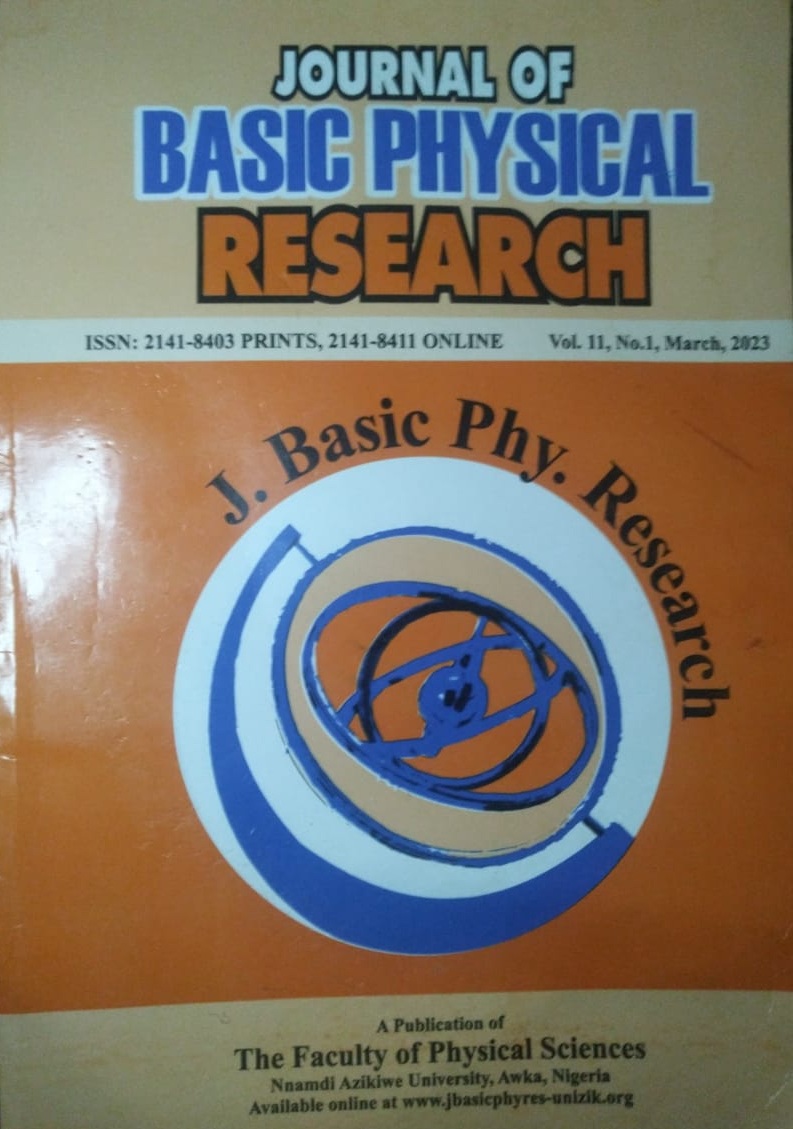REMOVAL OF SOME ORGANIC POLLUTANTS FROM AQUEOUS ENVIRONMENT USING PEROVSKITE NANOPARTICLES
Keywords:
Pollutants, Adsorption, Kinetics, Thermodynamics, Perovskite, NanoparticlesAbstract
The toxic effects of some organic pollutants on human and the aquatic life are of serious concern. The need for removal of these pollutants from aqueous environment led to the use of adsorption techniques as a cheap and efficient treatment method. In this research, mixed metal oxide (Perovskite) was synthesised through coprecipitation method. It was characterised by FTIR and XRD analysis, further characterisation was done for bulk density, particle density, pore volume, % pore space, % solid space and surface area. Batch adsorption was conducted using the synthesised adsorbent for the removal of tartrazine, BHT and dioxane from aqueous environment. Various parameters such as contact time, adsorbent dosage, initial concentration, pH and temperature were studied to observe their effect in the adsorption process. FTIR spectra showed eleven absorptions at 693.28484 cm-1, 838.65101 cm-1, 1021.29057 cm-1, 1148.02005 cm-1, 1401.47903 cm-1, 1561.75455 cm-1, 1871.12359 cm-1, 2109.67322 cm-1, 2366.85953 cm-1, 3186.87385 cm-1, 3548.42562 cm-1 indicating the presence of aromatic derivatives, halo compound, vinyl ether, aliphatic ether, sulfone, nitro compound, anhydride, isothiocyanate, carbondioxide, carboxylic acid and alcohol respectively. XRD spectra showed no peak revealing that the synthesized perovskite is not a crystal. The experimental equilibrium adsorption data fitted better to the freundlich isotherm model than the Langmuir isotherm model. The kinetic data conformed better to pseudo second order model than the pseudo-first order model. The adsorption of tartrazine, BHT and dioxane were non spontaneous for all the adsorption at the temperatures under investigation. The result of this study shows that this mixed metal oxide can be used as effective adsorbent for the removal of contaminants from aqueous environment.


